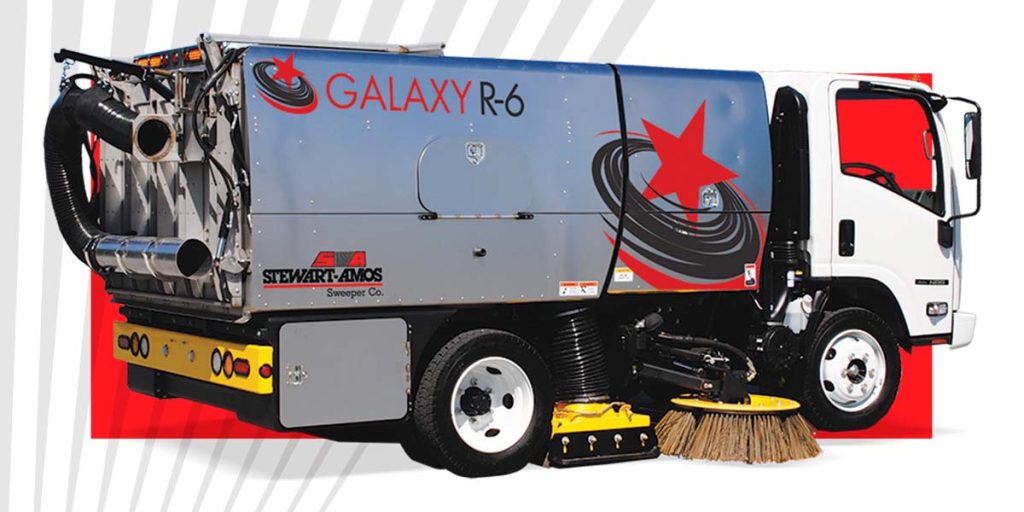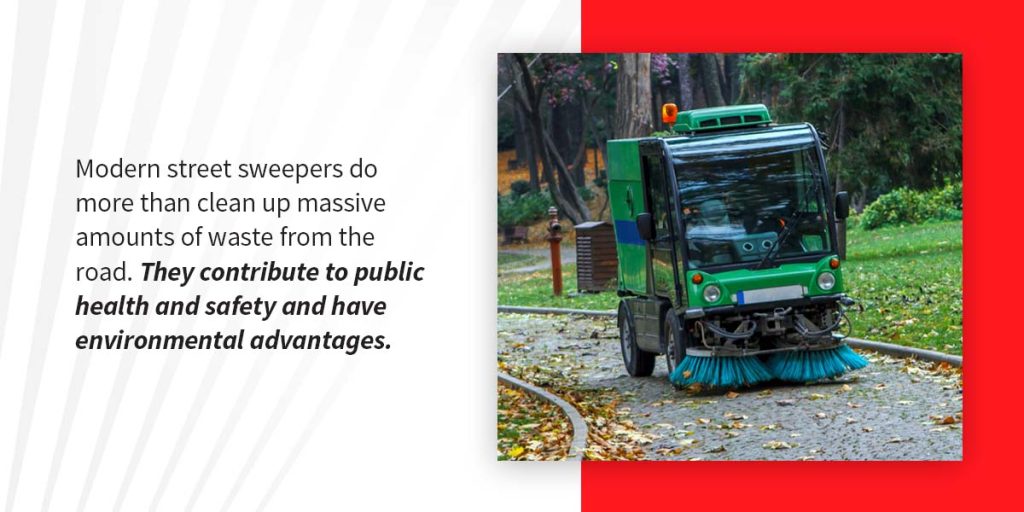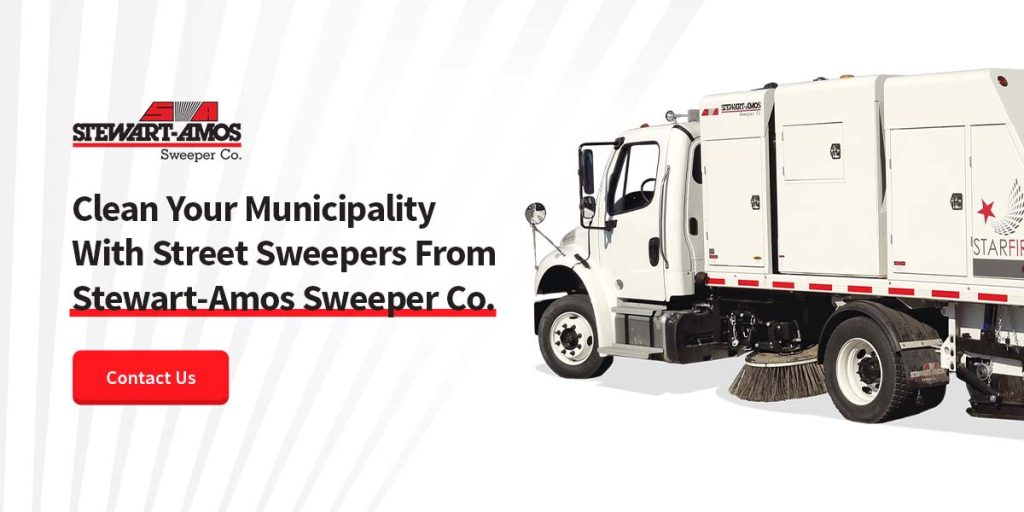Thanks to the invention of the street sweeper, people’s lives in numerous communities, cities and municipalities improved. It’s a frequent misconception that street sweeping’s sole purpose is to remove dirt and leaves from a roadway or concrete walkway. While this is a significant convenience for the general public and the community, the aim and advantages of street sweeping extend beyond that.
The increased need for cleaner roads and paths worldwide drives the global street sweeper market. Furthermore, shifting trends and advances in machinery may fuel the expansion of the street sweeper market in the near future. The global street sweeper market may reach over $3.190 million in 2030.
If you’re curious about who invented the street sweeper, how the street sweeper started, and has come so far ever since, check out the article below.

Who Invented the Street Sweeper?
The history of street sweepers starts with the invention of roads. The cleanliness of roads became a significant concern when they served as dumping grounds for all forms of trash, resulting in a slew of health issues. These repercussions were felt in Europe and North America as coal dust was particularly troublesome during the Industrial Revolution.
The dust would settle on streets, only to be washed away by rain into nearby waterways — used for drinking water — and resulted in many becoming sick. Further, cobblestone and brick roads provided numerous hiding places for waste and silt between the cracks and fissures, making cleaning a challenge.
Historically, street cleaning was a manual process done by manually using a broom to remove debris from the streets — a strenuous and slow method. You can understand why having a machine perform the task would be appealing. Fortunately, C.S. Bishop invented the first mechanical street sweeper and patented it on September 4, 1849, in the United States. Bishop’s mechanical street sweeper was powered by a horse-drawn carriage, helping simplify the process.
Over 40 years later came the Charles Brooks street sweeper. Brooks wanted to improve the effectiveness of Bishop’s street sweeper. Brooks thought the traditional method of cleaning the streets needed to be more efficient and efficient. As a result, he decided to build a broom — or sweeper — and attach it to a truck. This idea led to the invention of the street sweeper truck — the first street cleaner that was self-propelled. Brooks patented his design on March 17, 1896.
The Original Street Sweeper
So, what is a street sweeper? A street sweeper is a machine that aids in the pollution management of rainwater. Roadway sweeping entails using mechanical or vacuum cleaning equipment to remove particles from pavement or street surfaces before they can become runoff in stormwater drains. Originally, the street sweeper worked differently than what we see today.
The C.S. Bishop street sweeper had a broom on the machine that resembled a standard push broom. The horse-drawn street sweeper had many rotating disks or drums coated with stiff wire bristles. Bishop’s concept planned for the sweeper to be a towed attachment with a revolving brush wheel built in. It also had twin conveyor belts for placing collected debris into a container known today as a “hopper.”
The Charles Brooks street sweeper was a truck frame mounted on axles supported by front and rear wheels. It consisted of elevator mechanisms, drive wheels and a chain that moves around the sprocket wheels. The vehicle featured rotating brushes mounted to the front fender. These spinning brushes would convert into a flat scraper for snow and ice removal in the winter.
Today’s Street Sweepers
As technology advanced, so did street sweepers — a lot has changed and evolved since the first mechanical street sweeper. Different types of street sweepers can consist of vacuums, brushes and high-pressure water sprayers. The combination of these components helps loosen, remove and suction up massive amounts of debris, particles and pollutants from the roads.
Powered by two engines, today’s street sweepers can effectively clean roads and improve public health and safety. One engine powers the truck, and the other engine powers the circular broom heads, vacuums and water spouts, which pull debris into the back hopper. To effectively clean roads, the first water spout at the front of the vehicle wets the debris and road. This prevents dust from floating into the air and compacts the dirt and trash together, making it easier to sweep and suction.
Behind the front wheels are the two circular broom heads, which operate separately or in unison. The broom heads spin the debris toward the center skirt. With rubber skirts preventing waste from escaping beneath the truck and establishing a seal around the head, regenerative air is pushed through the back end of the vehicle, sucking the trash up into the hopper. A fan stands above the hopper, pushing air down one hose, which is then pushed over the head and up another hose into the hopper with the debris.
Once the hopper gets full, the street sweeper stops sucking debris. The street sweeper truck operator then drives back to empty the hopper and dump the collected waste at a designated location.

The Importance of Street Sweepers
Modern street sweepers do more than clean up massive amounts of waste from the road. These machines play an essential role in our daily lives and have numerous benefits to municipal waste management programs. They contribute to public health and safety and have environmental advantages:
Environment
Street cleaning offered by street sweepers positively impacts the environment. It plays a crucial role in protecting the ecosystem around us:
- Pollution reduction: One significant benefit of street sweeping is the elimination of dangerous pollutants and metals that can enter the air and water. Street sweeping helps maintain our environment by safely removing waste.
- Pavement protection: Establishing a consistent sweeping plan in your neighborhood aids in the removal of debris and the extended use of paved roads and walks.
- Wildlife conservation: Street sweeping reduces the number of plastics that wind up on the sides of roadways, affecting local wildlife.
Health
It’s crucial to maintain the overall health of a community, city or municipality. Street sweepers can remove an array of materials to promote a better living environment for individuals and wildlife:
- Hazardous materials
- Litter and debris
- Overgrown vegetation
- Industrial emissions
Safety
Just as the health of a community is crucial, so is its safety. Another advantage of street sweeping is that it improves the safety of the community, city or municipality in two ways:
- Public safety: The public’s safety must be a top priority for all inhabitants and those passing through or visiting a city. The removal of roadside debris minimizes the number of car accidents and increases driver safety.
- Pedestrians, cyclists and runners: If not consistently swept, roadway and walkway waste can become obstacles for the public to avoid, potentially leading to accidents.

Clean Your Municipality With Street Sweepers From Stewart-Amos Sweeper Co.
Stewart-Amos Sweeper Co. provides high-quality street sweepers — mechanical broom street sweepers and regenerative air sweeper trucks. Our street sweeper trucks save time and provide dependable results for a wide range of services. With our extensive product line, you can find the ideal street sweeper vehicle for your surface and cleaning needs.
We’re committed to producing effectively simple products with essential parts and components that are simple to maintain and repair. Contact us today for more information or a demonstration.
